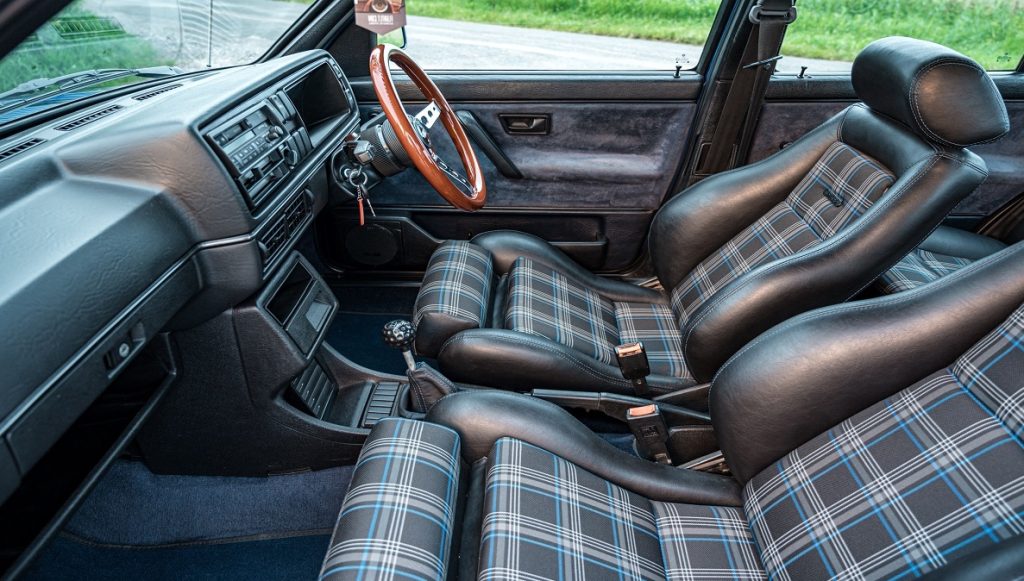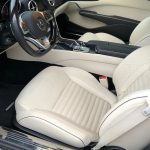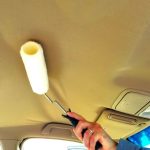Driving in comfort and style is a priority for every car enthusiast, but the constant battle of keeping car seat covers in place can be a frustrating challenge. The slipping, sliding, and bunching not only detract from the aesthetic appeal but also compromise the overall driving experience. In this in-depth guide, we’ll explore various aspects of this common issue and provide a wealth of information to help you keep your car seat covers securely anchored.
Understanding the Challenge
The Perplexity of Slipping Covers
Car seat covers slipping down is a multifaceted problem influenced by several factors. Let’s delve into the intricacies of why this occurs and how to address each aspect.
Factors Influencing Slippage
- Fabric Type: The choice of fabric plays a significant role in slippage. Smooth materials may contribute to covers sliding off. Opt for materials with a balance of comfort and grip.
- Poor Fit: Ill-fitting seat covers are more prone to movement. Always choose covers designed specifically for your car model to ensure a snug and secure fit.
- Temperature Changes: Extreme temperatures can impact the elasticity of the cover material, leading to slippage. Consider climate-appropriate seat covers to mitigate this effect.
Tackling the Issue: Practical Solutions
1. Choose the Right Seat Covers
Investing in high-quality seat covers that fit snugly is the foundation of preventing constant adjustments. Look for covers with anti-slip features, ensuring a secure fit and minimizing the need for frequent repositioning.
2. Secure with Straps and Buckles
Many seat covers come equipped with built-in straps and buckles. Utilize these features to fasten the covers tightly to the seat, providing additional stability and minimizing unwanted movement.
3. Grip-Tech Technology
Innovative grip-tech technology is a game-changer. Seat covers designed with materials that naturally adhere to the seat fabric significantly reduce slippage, offering a more reliable solution.
4. Non-Slip Backing Mats
An additional layer of non-slip backing mats placed on the car seats before installing covers can provide extra grip. This simple yet effective measure minimizes unwanted movement and enhances stability.
5. DIY Solutions: Velcro Strips
For a cost-effective solution, consider attaching Velcro strips to the seat and cover edges. This DIY hack provides a customizable and secure fit, addressing the issue of slipping.
Maintaining Style and Comfort
6. Regular Adjustments
Despite your best efforts, periodic adjustments may still be necessary. Establishing a routine for checking and readjusting the covers ensures they stay in place without sacrificing your style.
7. Fabric Selection Matters
The material of the seat covers significantly impacts both comfort and grip. Striking the right balance ensures functionality and aesthetics coexist harmoniously, minimizing the need for constant adjustments.
8. Weather Considerations
Extreme temperatures can affect fabric adhesion. Choose seat covers suitable for your climate, considering both hot and cold weather conditions to maintain stability.
9. Easy Removal for Cleaning
Prioritize seat covers that are easy to remove for cleaning. This practical solution ensures cleanliness without compromising on stability, promoting longevity.
10. Compatibility with Seat Features
Ensure your chosen seat covers are compatible with seat features like airbags, heating, and cooling systems. This not only ensures covers stay in place but also maintains essential safety features. (See Also: Black vs. Tan Leather Car Interior: Choosing the Perfect Luxury Touch)
Additional Considerations
11. Seat Cover Maintenance
Regularly check and maintain your seat covers. Washing and caring for them as per the manufacturer’s instructions contribute to long-lasting stability.
12. Professional Installation
Consider professional installation for custom or intricate seat cover designs. Experts can ensure a secure fit that minimizes slippage and enhances the overall aesthetic.
13. User Reviews and Recommendations
Explore user reviews and recommendations when purchasing seat covers. Real-world experiences can guide you towards products that effectively stay in place and meet your specific needs.
14. Seat Cover Accessories
Explore additional accessories like grip-enhancing pads or clips designed to keep seat covers anchored securely. These add-ons can be invaluable in enhancing stability.
15. Customization for a Snug Fit
Consider custom-made seat covers tailored specifically for your car’s make and model. This ensures a perfect fit, reduces the likelihood of slippage, and adds a personalized touch to your interior.
Expert Tips for Keeping Your Car Seat Covers Secure
Ensuring your car seat covers stay firmly in place is more than just a convenience—it’s a key factor in enhancing your driving experience. A secure fit not only adds to your comfort but also preserves the aesthetics of your vehicle’s interior. Here, we delve into expert tips that go beyond the basics, providing comprehensive solutions to the perennial issue of slipping and sliding seat covers.
1. Invest in High-Quality Covers
Choosing seat covers made from premium, durable materials is foundational. Look for covers with anti-slip features, as these not only offer a snug fit but also resist movement during your daily commutes. High-quality covers are an investment that pays off in terms of longevity and performance.
2. Explore Grip-Tech Technology
For a cutting-edge solution, opt for seat covers that incorporate innovative grip-tech technology. These covers utilize advanced materials that naturally adhere to the seat fabric, minimizing slippage even during sudden stops or accelerations. This technology provides an extra layer of security, ensuring your covers stay in place.
3. Utilize Built-In Straps and Buckles
Many modern seat covers come equipped with built-in straps and buckles. Make the most of these features by fastening them tightly to the seat structure. This not only adds to the aesthetics but also provides additional stability, reducing the chances of covers shifting out of place.
4. Consider Non-Slip Backing Mats
Enhance your anti-slip arsenal by placing non-slip backing mats on your car seats before installing covers. This extra layer provides an increased grip surface, effectively preventing covers from sliding and bunching up. Non-slip mats are especially useful in maintaining stability, even on long drives.
5. DIY Fix: Velcro Strips
For those who appreciate a hands-on approach, consider implementing a simple yet effective DIY solution—attach Velcro strips to seat and cover edges. This customizable fix allows you to tailor the fit to your preferences, ensuring a secure and personalized seating experience. (See Also: What Is The Best Material For Car Door Panels? Uncover Top Choices for Durability and Style)
6. Regularly Check and Adjust
Preventive maintenance is key to ensuring long-lasting stability. Establish a routine to regularly check and adjust your seat covers. This proactive approach not only guarantees they stay in place but also preserves the overall aesthetic appeal of your car’s interior.
7. Choose Climate-Appropriate Covers
Take climate considerations into account when selecting seat covers. Extreme temperatures can impact fabric adhesion, making it essential to choose covers suitable for your region’s weather conditions. Covers designed for specific climates maintain their integrity, preventing slippage.
8. Prioritize Easy Removal for Cleaning
Ease of maintenance is crucial. Opt for seat covers that are not only stylish and comfortable but also easy to remove for cleaning. This practical feature not only ensures cleanliness but also simplifies the process of securing a snug fit after washing.
9. Verify Compatibility with Seat Features
Modern vehicles come equipped with various features like airbags and heating/cooling systems integrated into the seats. Ensure your chosen seat covers are compatible with these features, ensuring functionality without compromising safety.
10. Explore Additional Accessories
Enhance stability further with accessories designed specifically for seat covers. Grip-enhancing pads or clips can provide extra support, preventing unwanted movement and ensuring your covers stay firmly in place.
By implementing these expert tips, you go beyond the conventional methods, creating a comprehensive strategy to keep your car seat covers securely anchored. Elevate your driving experience by combining optimal comfort with an interior that reflects your personal style—all while ensuring your covers stay in place, ride after ride.
Frequently Asked Questions About Keeping Car Seat Covers in Place
Car seat covers slipping and sliding can be a common frustration for many drivers. To address your queries and provide solutions, we’ve compiled a set of frequently asked questions about keeping car seat covers securely in place.
1. Why do car seat covers keep slipping?
Car seat covers may slip due to various factors, including poor fit, smooth fabric, or extreme temperatures affecting material elasticity. Understanding these factors is crucial for finding effective solutions.
2. How can I prevent my seat covers from slipping?
Invest in high-quality covers with anti-slip features, secure them with built-in straps and buckles, use non-slip backing mats, and explore grip-tech technology. Regular adjustments and DIY fixes like Velcro strips can also help.
3. Are there specific seat covers designed to prevent slipping?
Yes, many seat covers come with innovative grip-tech technology or anti-slip features. Look for covers specifically designed to stay in place and resist movement during driving.
4. Do non-slip backing mats really work?
Yes, non-slip backing mats provide an additional layer of grip, effectively preventing seat covers from sliding and bunching up. Placing these mats on your car seats before installing covers can enhance stability. (See Also: How Do Air Conditioned Seats Work? Stay Cool Inside Your Car!)
5. How often should I check and adjust my seat covers?
Establish a routine to check and adjust your seat covers regularly, especially after long drives or changes in temperature. Proactive maintenance ensures covers stay securely in place.
6. Can DIY solutions like Velcro strips be effective?
Yes, Velcro strips can be a cost-effective and customizable solution. Attaching Velcro strips to seat and cover edges allows you to tailor the fit to your preferences, reducing slippage.
7. Do climate considerations matter when choosing seat covers?
Yes, extreme temperatures can impact fabric adhesion. Choosing seat covers suitable for your region’s climate helps maintain stability and prevent slipping.
8. What should I do if my seat covers are incompatible with seat features?
Ensure compatibility when purchasing seat covers. If your covers are incompatible with features like airbags or heating/cooling systems, consider alternative covers that meet safety requirements.
9. Are there additional accessories to enhance stability?
Yes, explore accessories like grip-enhancing pads or clips designed specifically for seat covers. These add-ons can provide extra support, minimizing unwanted movement.
10. Can professional installation help prevent slippage?
Professional installation, especially for custom or intricate seat cover designs, can ensure a secure fit and minimize slippage. Experts can provide tailored solutions for your specific vehicle model.
These frequently asked questions cover various aspects of keeping car seat covers in place, providing insights into the causes of slippage and offering practical solutions to enhance stability and driving comfort.
Final Thoughts
Maintaining car seat covers in place involves a combination of choosing the right products and implementing practical solutions. By understanding the perplexity of slipping covers and applying these comprehensive tips, you can enjoy a secure and stylish interior without the constant hassle of readjustments. Say goodbye to the sliding struggle and embrace a worry-free driving experience with firmly anchored seat covers!



